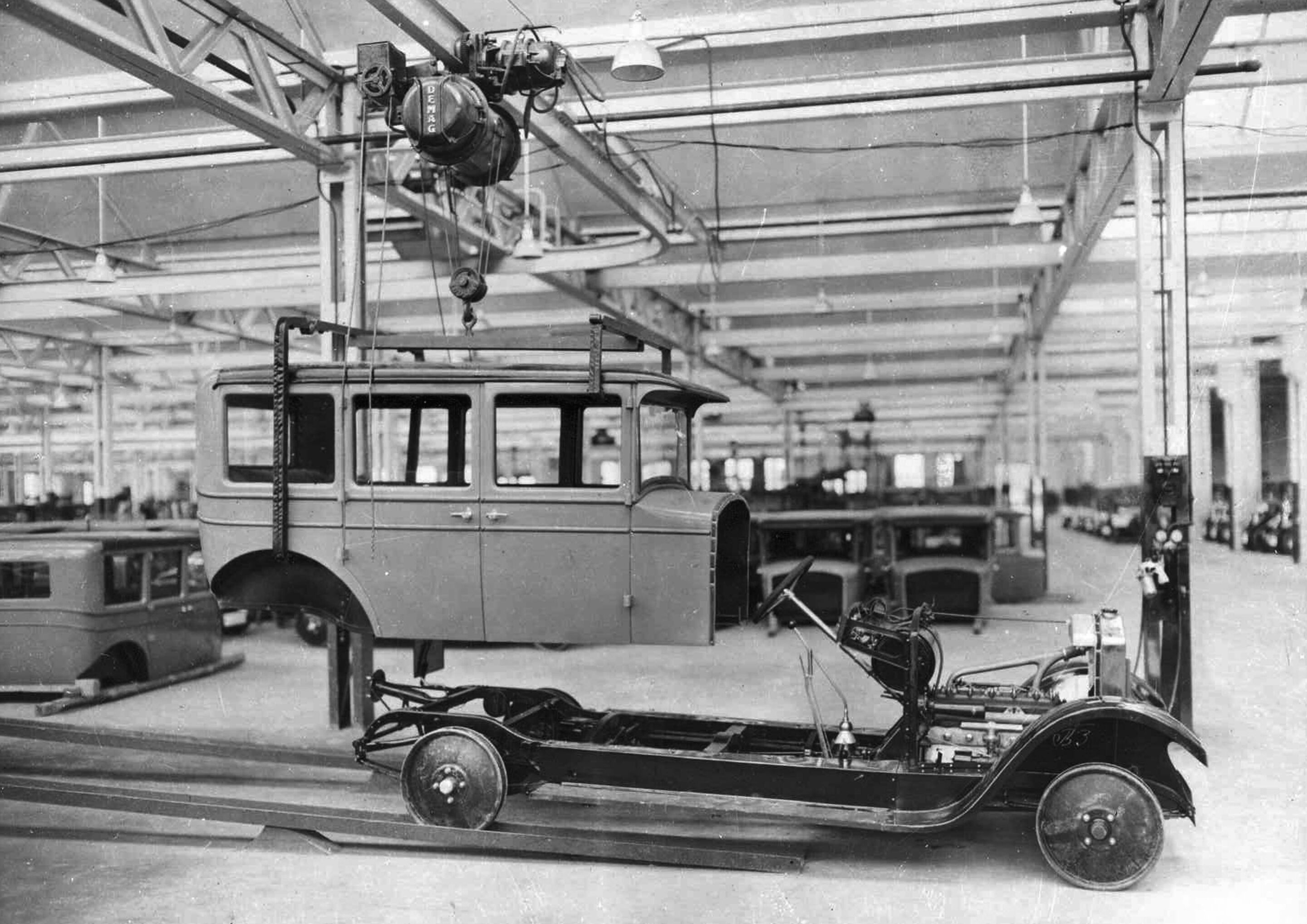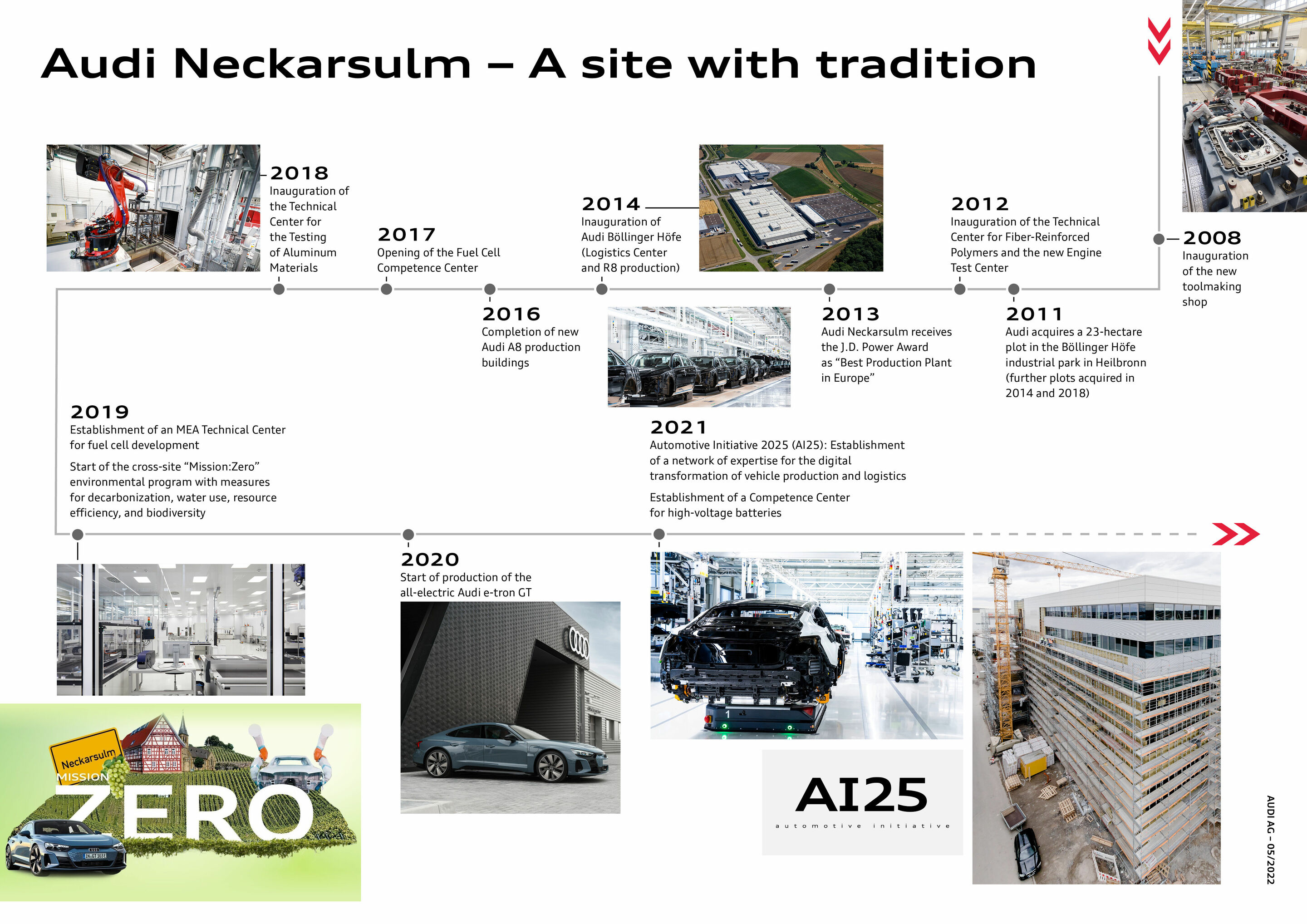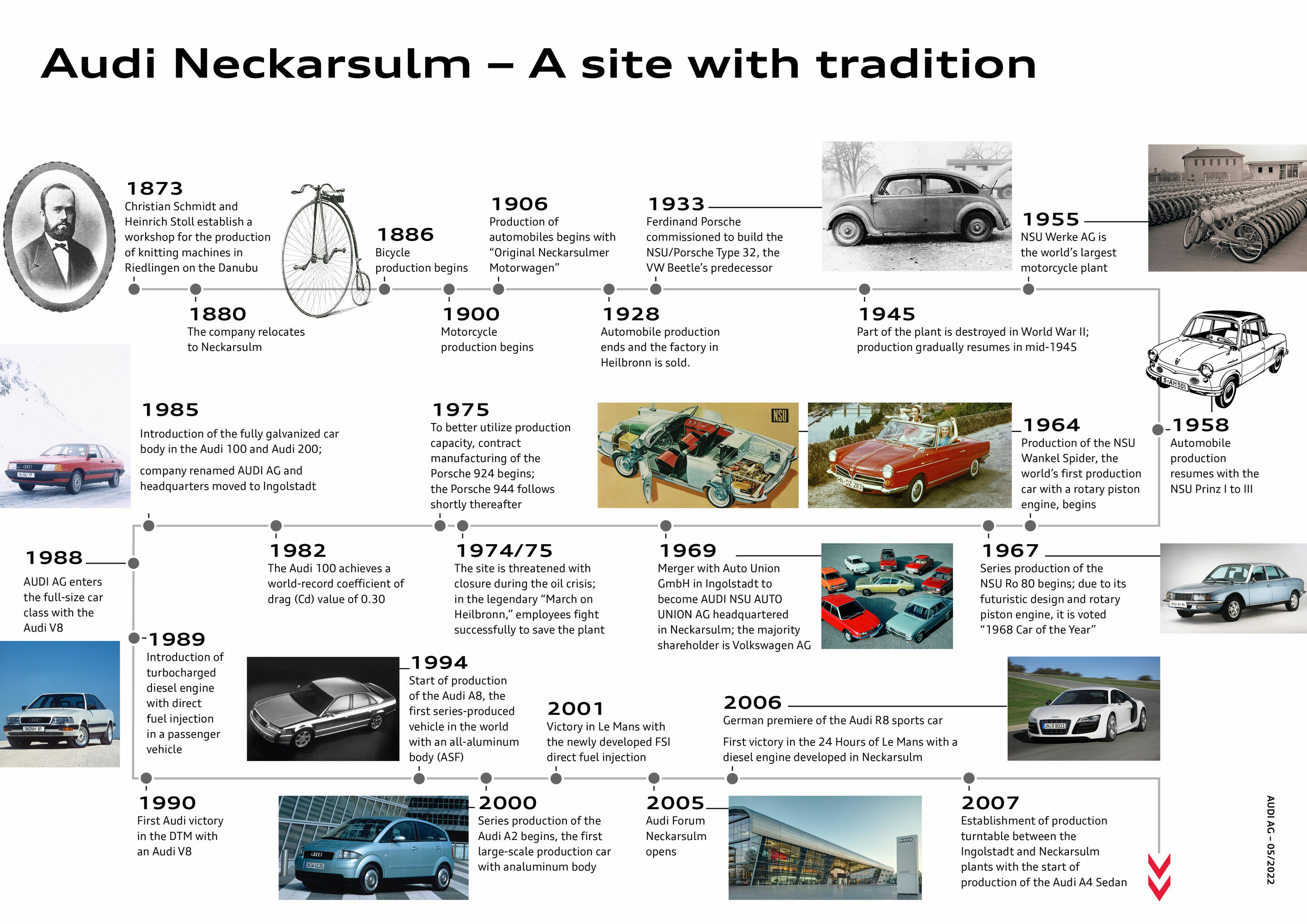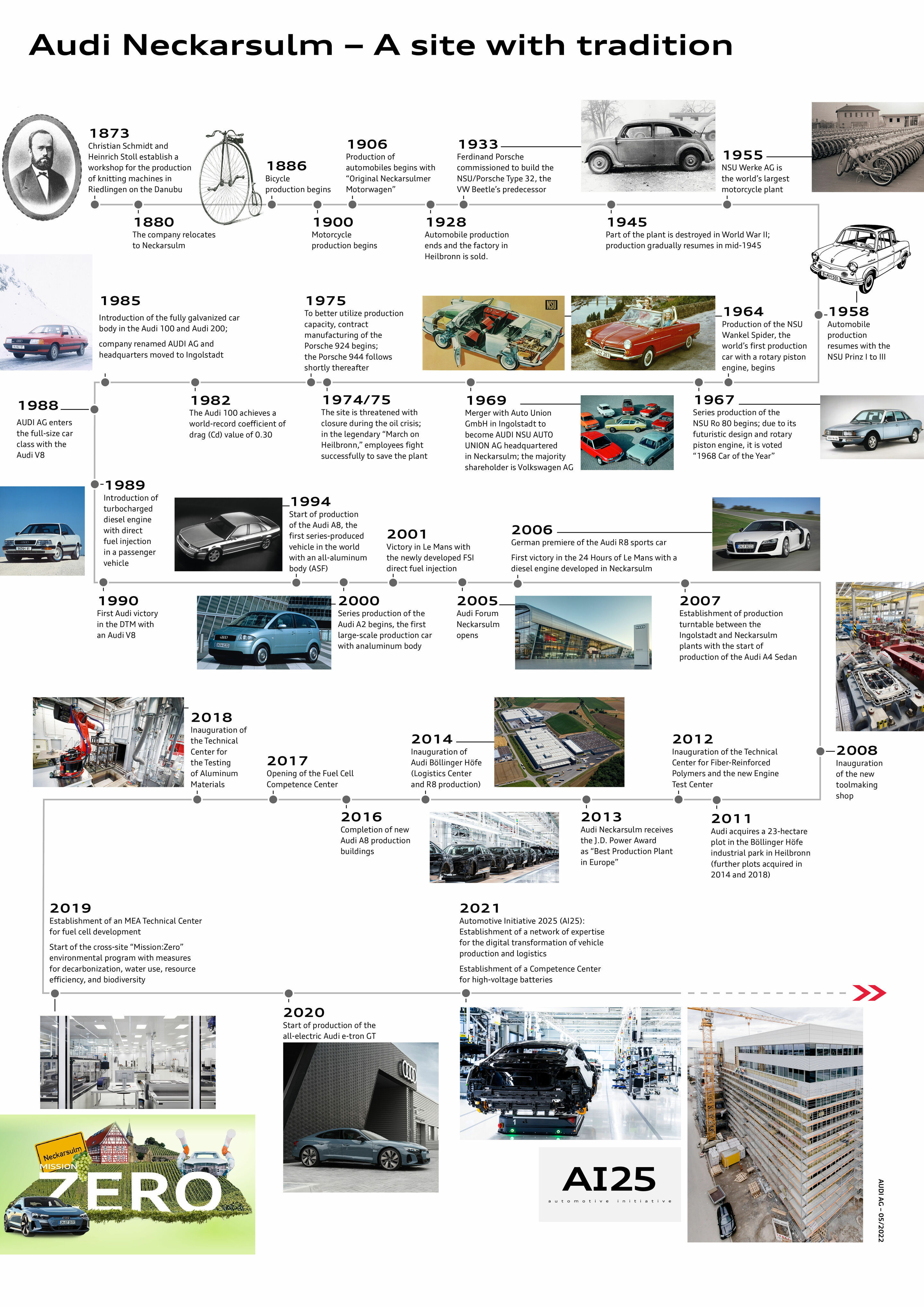History
Back to overview| 1873 | Christian Schmidt and Heinrich Stoll establish a workshop for the production of knitting machines in Riedlingen on the Danube. |
| 1880 | The company relocates to Neckarsulm |
| 1886 | Bicycle production begins |
| 1900 | Motorcycle production begins |
| 1906 | Production of automobiles begins (“Original Neckarsulmer Motorwagen”) |
| 1928 | Automobile production ends and the factory in Heilbronn is sold |
| 1933 | Ferdinand Porsche commissioned to build the NSU/Porsche Type 32, the VW Beetle’s predecessor |
| 1945 | Part of the plant is destroyed in World War II; production gradually resumes beginning in mid-1945 |
| 1955 | NSU Werke AG is the world’s largest motorcycle plant |
| 1958 | Automobile production resumes with the NSU Prinz I to III |
| 1964 | Production of the NSU/Wankel Spider, the world’s first production car with a rotary piston engine, begins |
| 1967 | Series production of the NSU Ro 80 begins; due to its futuristic design and rotary piston engine, it is voted “1968 Car of the Year” |
| 1969 | Merger with Auto Union GmbH Ingolstadt to become Audi NSU Auto Union AG; the majority shareholder is Volkswagen AG |
| 1974/75 | The site is threatened with closure during the oil crisis. In the legendary “March on Heilbronn,” employees fight successfully to save the plant |
| 1975 | To better utilize production capacity, contract manufacturing of the Porsche 924 begins; the Porsche 944 follows shortly thereafter |
| 1982 | The Audi 100 achieves a world-record coefficient of drag (Cd) value of 0.30 |
| 1985 | Introduction of the fully galvanized car body in the Audi 100 and Audi 200; company renamed AUDI AG and headquarters moved to Ingolstadt |
| 1988 | AUDI AG enters the full-size car class with the Audi V8 |
| 1989 | Introduction of turbocharged diesel engine with direct fuel injection in a passenger vehicle |
| 1990 | First DTM victory for Audi with an Audi V8 quattro driven by Hans-Joachim Stuck |
| 1994 | Start of production of the Audi A8, the first series-produced vehicle in the world with a completely aluminum body (ASF – Audi Space Frame) |
| 2000 | Production of the Audi A2, the first aluminum, large-volume production car, begins |
| 2001 | Victory in Le Mans with the newly developed FSI direct fuel injection |
| 2005 | Audi Forum Neckarsulm opens |
| 2006 | German premiere of the Audi R8 sports car; first victory in the 24 Hours of Le Mans with a diesel engine developed in Neckarsulm |
| 2007 | Establishment of the production turntable between the Ingolstadt and Neckarsulm plants with the start of production of the Audi A4 Sedan |
| 2008 | Inauguration of the new Audi toolmaking shop |
| 2011 | Audi acquires a 23-hectare plot in the Böllinger Höfe industrial park in Heilbronn (further plots acquired in 2014 and 2018) |
| 2012 | Inauguration of the Technical Center for Fiber-Reinforced Polymers and the new Engine Test Center |
| 2013 | Audi Neckarsulm receives the J.D. Power Award as “Best Production Plant in Europe” |
| 2014 | Inauguration of Audi Böllinger Höfe (Logistics Center and R8 production) |
| 2015 | Audi Forum Neckarsulm celebrates its tenth anniversary |
| 2016 | New Audi A8 production buildings open |
| 2017 | Opening of the Fuel Cell Competence Center |
| 2018 | Inauguration of the Technical Center for the Testing of Aluminum Materials |
| 2019 | Establishment of an MEA Technical Center (functional layer systems) for fuel cell development; start of the cross-site Mission:Zero environmental program with measures for decarbonization, sustainable water use, resource efficiency, and biodiversity |
| 2020 | Start of production of the all-electric Audi e-tron GT quattro |
| 2021 | Automotive Initiative 2025 (AI25): Establishment of a network of expertise for the digital transformation of vehicle production and logistics; establishment of a Competence Center for high-voltage batteries |
| 2022 | Optimizing production for electromobility: Modernization of existing buildings, groundbreaking ceremony for new paint shop |
| 2023 | Inauguration of C20, the new five-story Technical Development building. |
| 2024 | Start of production for the new Audi A5, the first model based on the Premium Platform Combustion (PPC). Opening of the new paint shop. It is one of the most modern in the automotive industry. |
| 2025 | Start of production for the new Audi A6 – forming part of the greatest ramp-up in the plant’s history together with the new A5 the year before. Audi Forum Neckarsulm celebrates its 20-year anniversary. |



